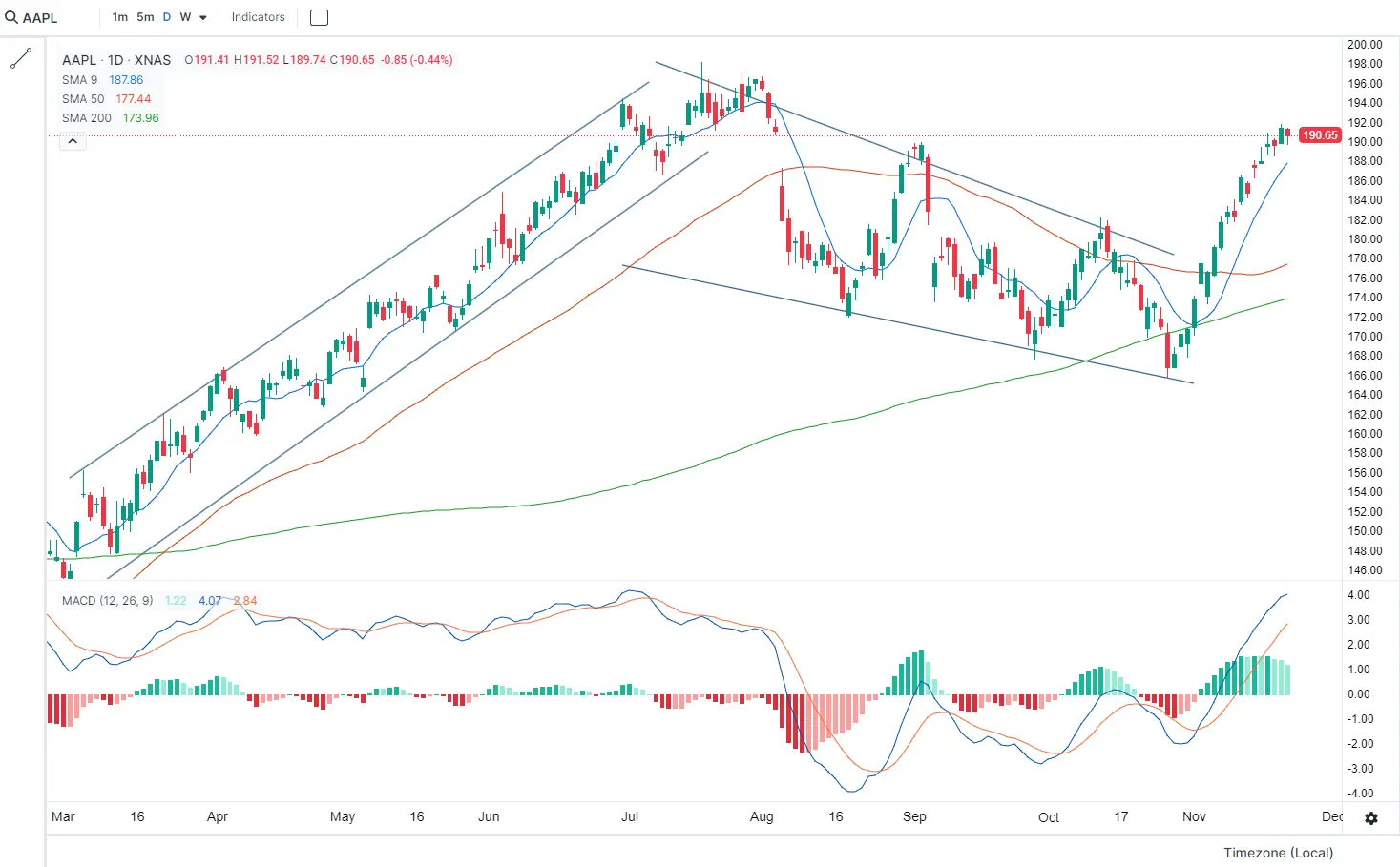Getting Started Building a Trading Career Tools and Resources Glossary - Backtesting
- Backtesting Depth
- Bear Market
- Bull Market
- Candlestick
- Charting
- Chart Patterns
- Day Trading
- Dividend Yield
- ETF
- Fundamental Analysis
- Leverage
- Limit Order
- Index Fund
- Margin Trading
- Market Capitalization
- Mutual Fund
- Market Trends
- Moving Averages
- Price-to-Earnings Ratio (P/E Ratio)
- Portfolio Diversification
- Positions in Prosperse
- Risk Management
- Scalping
- Short Selling
- Stock Alerts
- Stock Scanning
- Stock Screener
- Stop-Loss Order
- Support and Resistance
- Swing Trading
- Take Profit
- Technical Analysis
- Trend Lines
- Volatility
Glossary - Swing Trading
Swing Trading definition
A trading strategy that involves holding positions for several days or weeks to capitalize on price swings.Swing trading is a medium-term trading strategy that involves holding positions for several days to weeks, with the goal of capturing price swings within an existing trend. Swing traders typically rely on technical analysis to identify entry and exit points.
Use Cases
A swing trader might buy a stock when it bounces off a support level and sell it when it approaches a resistance level. This strategy allows traders to capitalize on short- to medium-term market movements without the need to constantly monitor the markets like a day trader.
For example, a swing trader might hold a position in a stock that is trending upwards over the course of two weeks, capturing gains as the stock makes higher highs and higher lows.
Historical Context
Swing trading gained popularity in the late 20th century as more retail investors gained access to real-time market data and charting tools. Unlike day trading, which requires intense focus and rapid decision-making, swing trading offers a more relaxed approach while still providing opportunities for significant profits.
Platforms like Prosperse provide tools tailored for swing traders, including advanced charting, technical indicators, and market scanning capabilities that help traders identify potential swing trades.
Visual Aid
Below is an example of a swing trading setup in Prosperse, highlighting key technical indicators like moving averages and RSI.

Swing trading setups like this allow traders to identify potential entry and exit points based on the momentum and trends observed in the market.
Related Terms:
- Day Trading: A trading strategy where traders buy and sell financial instruments within the same trading day.
- Technical Analysis: An analysis method that uses past price data and volume to predict future price movements.
Frequently Asked Questions
What is swing trading?
Swing trading is a medium-term trading strategy that involves holding positions for several days to weeks, aiming to capture price swings within a trend. Traders rely on technical analysis to identify entry and exit points.
How does swing trading differ from day trading?
Swing trading differs from day trading in that positions are held for longer periods, typically days to weeks, whereas day traders close out all positions within the same trading day. Swing trading requires less constant monitoring and can be less stressful than day trading.
What tools do swing traders use?
Swing traders use technical indicators such as moving averages, RSI, and MACD, as well as chart patterns like support and resistance levels. These tools help them identify potential entry and exit points within an ongoing trend.
Is swing trading risky?
Like all trading strategies, swing trading carries risks. However, because positions are held for a longer period, there is more time for trades to develop, which can reduce the pressure to make quick decisions. Risk management is crucial, including the use of stop-loss orders and position sizing.
Can beginners start with swing trading?
Swing trading can be a suitable strategy for beginners because it allows for more time to analyze trades and make decisions. It's less intense than day trading, making it a good entry point for those new to trading.
What markets are best for swing trading?
Swing trading can be effective in various markets, including stocks, forex, and commodities. It works best in markets with clear trends and volatility, where price swings are more predictable.
How do I manage risk in swing trading?
Risk management in swing trading involves setting stop-loss orders, carefully selecting entry and exit points, and managing position sizes. It’s important to have a well-defined trading plan and to avoid emotional trading.
What are the most common swing trading strategies?
Common swing trading strategies include trend following, where traders aim to capture the middle part of a trend, and reversal trading, where traders look for points where the trend might change direction. Both strategies rely heavily on technical analysis.
